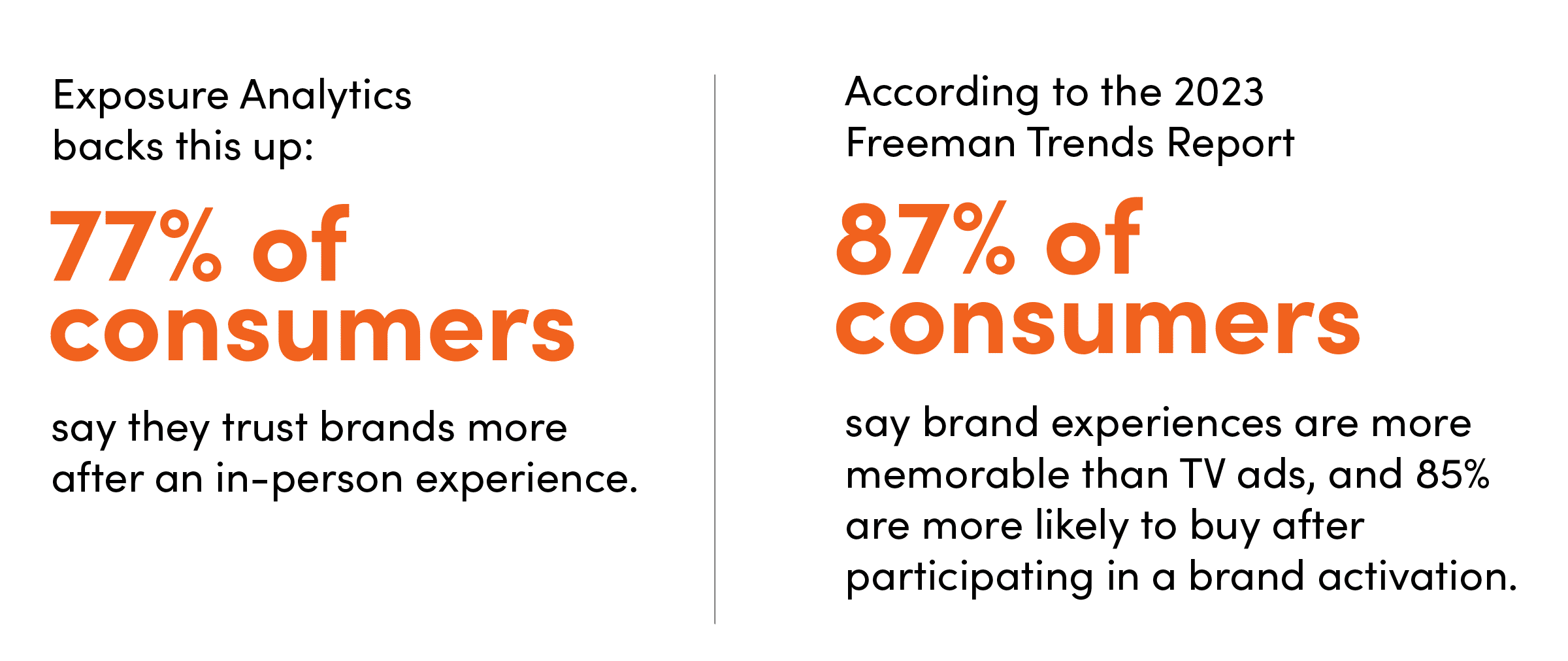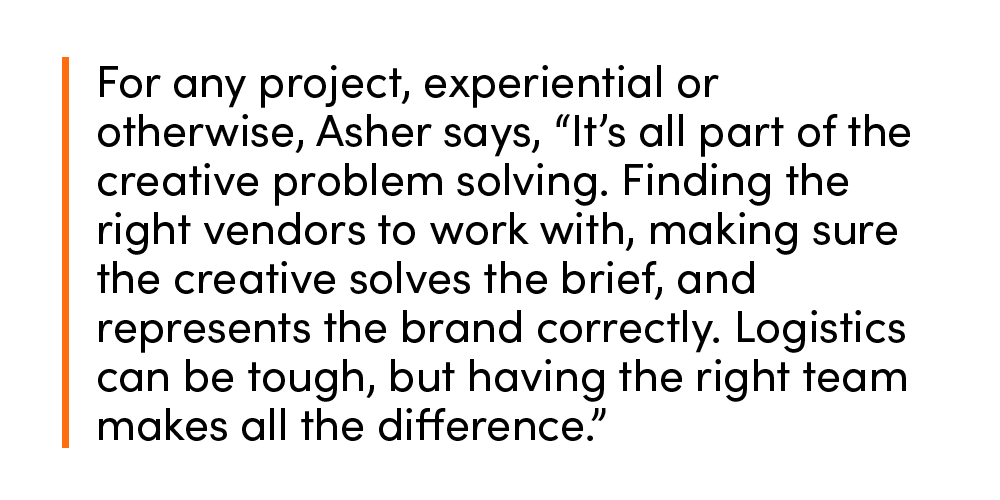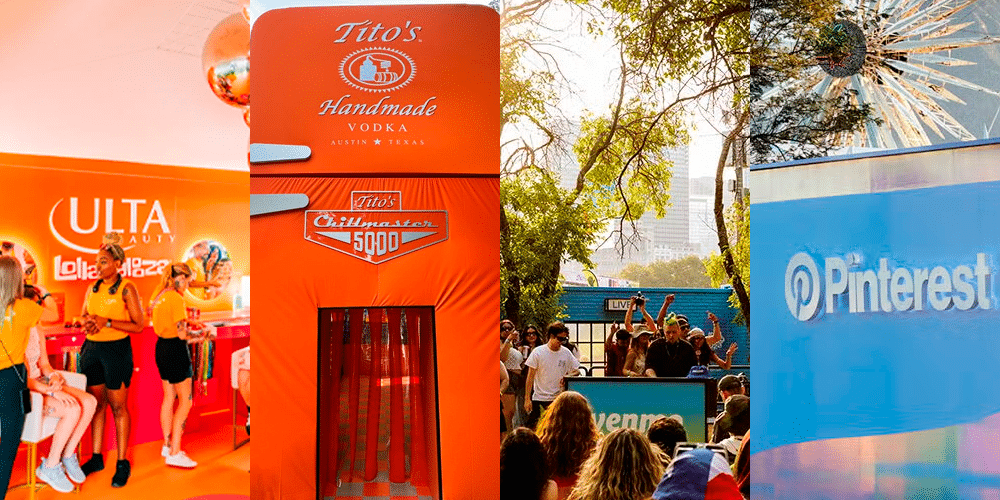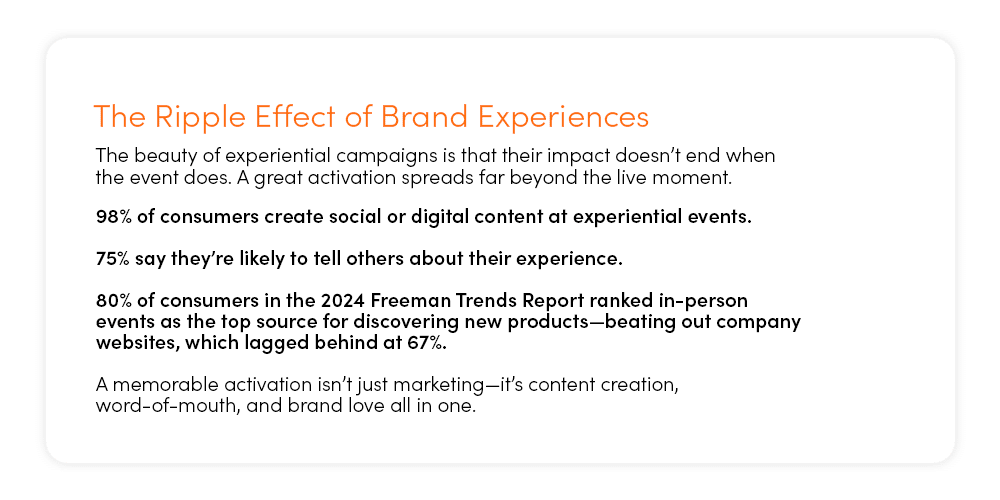Consumers today live on a spectrum between healthy skepticism and outright distrust of advertising. Digital ads are scrolled past, television spots skipped, and even influencer posts are increasingly met with side-eye. Brands are hungry for ways to feel more authentic, to rebuild trust, and to stand out. They can update their look, tell better stories, or partner with influencers—but nothing compares to the power of in-person connections.

It makes sense. Psychologists remind us that face-to-face interactions are not only more satisfying than online exchanges but also mood-boosting. Humans crave connection, and when a brand delivers that in a meaningful way, it sticks. That’s the power of experiential advertising.
The Festival Season Showdown
This past festival season, brands went big to connect with fans in the wild. Each activation wasn’t just about visibility—it was about solving problems, adding value, and creating moments people couldn’t help but share.
Ulta Beauty at Lollapalooza
Ulta Beauty introduced “The Beat Suite,” a fully immersive beauty pop-up where fans could refresh and personalize their festival looks all weekend long. With free glam sessions, stocked touch-up stations, beauty gifts, and gift cards, the activation fit seamlessly into the festival vibe. As (matter) Associate Creative Director Madison Asher puts it, “I like the popups that serve a real need in the moment. Ulta’s DIY bar to freshen up your festival look was very smart, gets people to try new products, and probably created some stellar mirror selfies.”
Tito’s Chillmaster5000 at Lollapalooza
Tito’s delivered a literal cool-down with a fully insulated walk-in fridge experience. Festivalgoers could chill, enjoy surprises, and then step outside to play claw machines for swag and access to the Tito’s Lounge.
Venmo House at Lollapalooza
Venmo tapped into the festival spirit with daily DJ sets, charm bracelet making with emoji charms, a receipt-style photo booth, and airbrush tattoos.
Blumhouse at SXSW
Celebrating 15 years of screams, Blumhouse built a soundproof “ScreamBox” where participants let loose their loudest horror shrieks, measured by decibel meters with daily prizes for winners.
Pinterest at Coachella
Pinterest invited attendees to “Remix Your Style,” blending digital mood boards with real-world themed zones and styled photos designed to be shared.
The common thread? Every activation leaned into experience first—and made sure it could live on beyond the event by encouraging users to take pictures and share them across social platforms, while having professional photographers on hand to capture the moments as well.
When Experiential Works (and When It Doesn’t)
What makes an experiential campaign worth the investment? Let’s hear it straight from the creatives who build them:
ACD Madison Asher says we need to first ask, “What does the consumer need in that moment? What problem can we solve for the consumer?”
(matter) Executive Creative Director Kenny Friedman adds, “Has this been done before? Because experiential is one of the only times a person gets to touch and interact with your brand, you gotta make that moment special.”
When doesn’t it work? “When a brand has no POV or wants to do the same old thing,” says Friedman.
Balancing Big Ideas with Real-World Constraints
Creative ambition always has to be balanced with budget, logistics, and brand guidelines. But sometimes limitations spark innovation.
Friedman explains, “Sometimes small budgets can create amazing things. But usually, those amazing things are scrappy, and the client needs to trust it. I worked with a gaming company that wanted to be seen at a European conference. We had 10 days before the conference, not a lot of time to do much. But we found an art group and had them plaster stickers and eco-friendly spray paints of the brand’s logo everywhere, from the walking path train stop to the convention. There was a lot of buzz about what was going on. It cost so little, but got seen by a ton and got a lot of social buzz.

Measuring More Than Buzz
Of course, success in experiential isn’t just about interaction or social media engagement—it’s about results tied directly to the brief. Whether it’s sign-ups, product trials, brand recognition, or simply more love for the brand, measurement should start with clear goals.
The Bottom Line
Experiential advertising doesn’t always have to be splashy or expensive. What matters is that it feels authentic, solves a real need, and leaves people walking away with not just a freebie—but a lasting impression. It works because it gives consumers what they want most: connection, emotion, and a story worth sharing.
Friedman says, “A good experiential campaign is one you can’t forget,” and the one he’ll never forget is “Love Has No Labels” from the Ad Council.
“It’s just super simple and human. Broken down to the simplest thing. The tech is great. Who doesn’t want to see skeletons dancing? It draws people in. And when folks realize who the people are, each pair of skeletons is more powerful. You add the ‘ohhhh what’s this pairing going to be?’ The kid with her sisters? Beautiful. The dad coming from the left who dances into the reveal? Love it. Tears me up every time.”


